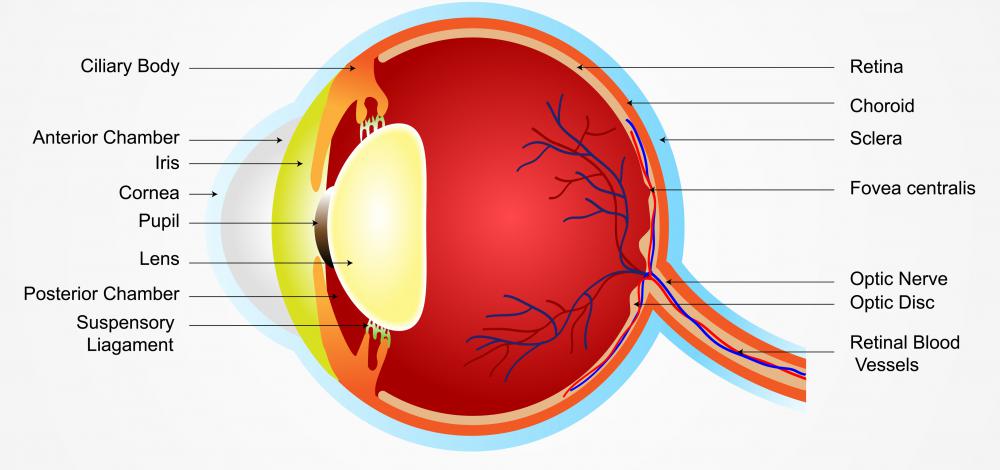At WiseGEEK, we're committed to delivering accurate, trustworthy information. Our expert-authored content is rigorously fact-checked and sourced from credible authorities. Discover how we uphold the highest standards in providing you with reliable knowledge.
What is Achromatopsia?
Achromatopsia is a vision condition that renders the individual nearly or completely colorblind. Also known as rod monochromacy, the condition is hereditary and often involves decreased visual acuity as well as a reduction in the ability to distinguish colors. While incurable, there are ways to compensate for the condition and minimize some of the symptoms.
The underlying cause of achromatopsia is a lack of cones in the retina of the eye. Cones, also known as cone photoreceptors, are responsible for the ability to distinguish different colors as well as enhance the sharpness of the light processed by the rod photoreceptors. When the number of cones in the center of the retina are reduced, the individual may be unable to perceive certain primary colors, or any secondary colors created from a mixture of those colors. When the cones are almost completely absent, the color blindness may be extreme, with no ability to distinguish colors at all.

This same lack of a normal amount of cones in the retina also has an impact on visual acuity. Because rod photoreceptors tend to saturate at higher levels of illumination, the result for people suffering with achromatopsia is that the eyes are overwhelmed by the brightness. Objects may be blurry, with distance vision being especially poor.
While there is no achromatopsia cure, it is possible to minimize some of the symptoms and at least improve the general quality of vision. Specially tinted lenses, either in the form of glasses or contact lenses, can help to perform part of the function of the missing cones, and make it much easier to enjoy a sharper range of vision. Depending on the severity of the condition, an achromat may choose to use protective lenses of varying shades. This makes it possible to enjoy the best quality of vision possible at different times of day.

Some people suffering with this condition may choose to avoid direct sunlight, and utilize limited amounts of artificial light in the home. Controlling the amount of exposure to light makes it possible to manage a number of everyday tasks, since the individual suffering with the condition is less likely to encounter situations where bright light causes pain to the extremely sensitive eyes. In situations where it is not possible to control the amount of light exposure, it is possible to partially compensate by frequent blinking of the eyes, and squinting from time to time.

It is important to note that while achromatopsia is a hereditary condition, there are no guarantees that the decreased number of retinal cones will automatically move from one generation to the next. Current statistics indicate that this form of colorblindness is extremely rare, with only one in every 33,000 people exhibiting a reduced or complete lack of cone photoreceptors. Continued improvement in the production of tinted eyewear, including contact lenses capable of adapting to various levels of sunlight, also offers additional hope for people suffering with this condition.
AS FEATURED ON:
AS FEATURED ON:













Discuss this Article
Post your comments